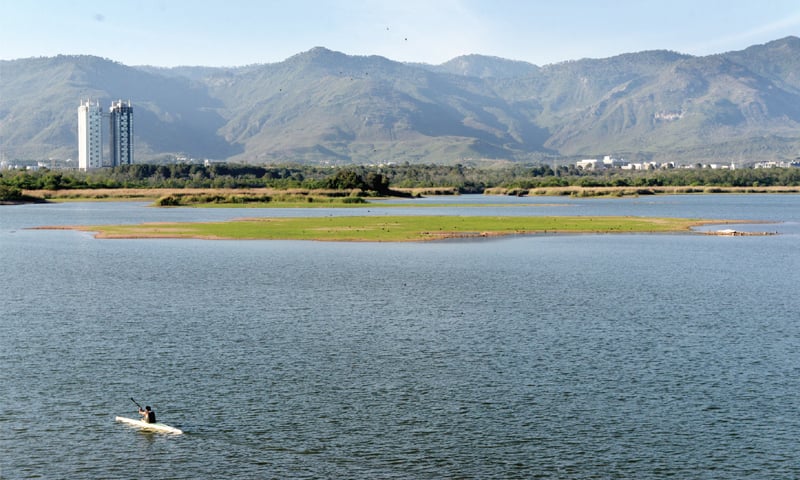ISLAMABAD: Though higher than normal rainfall is expected during the monsoon in the northern parts of Pakistan and the first spell has already stabilised the water level in Rawal Lake, officials are worried the rainy season will adversely affect the water storage capacity of the lake.
Even though 104 acre feet of water is being supplied every day to Rawalpindi, the water in Rawal Lake is well above the dead level at 1,708 feet and due to regular inflow from Murree and some areas of Islamabad, water has been at 1,735.6 feet for around two weeks.
“The rains are a good sign for everyone but us. The torrential rains are bringing in silt and sediment,” an official of the Punjab Irrigation Department.
“This compromises the storage capacity in the lake,” he said.
The Met Office has predicted more rains in the coming days which will increase the water level, most of which is not going to be due to more water.
According to estimates, there is currently 14,000 acre feet of water in Rawal Lake and officials are worried there will be more silt and sediments in the lake with time.
The last sedimentation survey at Rawal Lake was conducted in 2000 and all the current water capacity estimates for the lake are based on 18-year-old figures.
The original water capacity of the lake was 47,000 acre feet which has been reduced to 37,000 acre feet, according to the last survey.
The officials fear significant reduction in the water holding capacity of lake due extraordinary sediment deposits since the year 2000.
“Major infrastructure development and massive construction activities have occurred upstream after the year 2000 such as the mushroom growth of housing projects, the Islamabad-Murree motorway etc,” the official said, adding that this led to massive flow of heavy silts such as waste construction material, pebbles etc along the fast flowing seasonal springs.
Cement and sand has been flowing into the lake during the rainy seasons for the past 18 years and construction and deforestation has devoid the catchment areas of full grown trees that were holding thin soil along the slopes. This has triggered the flow of mud and soil during monsoon rains into Rawal Lake.
Rawal Lake was build in 1962 by the Punjab government in order to bring water to Rawalpindi and Islamabad. The lake covered an area of 8.8 square kilometres.
The proposed life of the small dam was 50 years which ended in 2012 but it continues to be a key source of water for Rawalpindi but neither the Capital Development Authority and the Islamabad Capital Territory administration nor the Punjab government has been able to establish another reservoir in the capital.
The first sedimentation survey of Rawal Lake was conducted in the late 1980s and the Punjab Irrigation Department and the Water and Power Development Authority are discussing the conduction of a third survey in the coming winters.
Published in Dawn, July 16th, 2018















































